Rashes caused by yeast. Candidiasis of the Skin: Causes, Symptoms, and Effective Treatments
What are the main symptoms of candidiasis of the skin. How can you prevent candidiasis infections. What are the most effective treatments for skin candidiasis. How does Candida overgrowth occur on the skin. Are there any natural remedies for candidiasis.
Understanding Candidiasis of the Skin: A Common Fungal Infection
Candidiasis of the skin, also known as cutaneous candidiasis, is a fungal infection caused by an overgrowth of Candida yeast on the skin. While small amounts of Candida naturally exist on our skin without causing problems, certain conditions can lead to excessive growth and infection. This article will explore the causes, symptoms, prevention methods, and treatments for this common skin condition.
Recognizing the Symptoms of Cutaneous Candidiasis
The primary symptom of skin candidiasis is a distinctive rash. How does this rash typically present itself? The affected areas often appear red, inflamed, and intensely itchy. In some cases, the skin may become cracked, sore, or develop blisters and pustules. The rash tends to favor areas where skin folds create warm, moist environments – prime real estate for fungal growth.

Common locations for candidiasis rashes include:
- Armpits
- Groin area
- Between fingers
- Under breasts
- Nail beds and surrounding skin
- Corners of the mouth
Differentiating Candidiasis from Other Skin Conditions
Several skin conditions can mimic the appearance of candidiasis, making accurate diagnosis crucial. These include:
- Ringworm
- Hives
- Herpes
- Diabetes-related skin issues
- Contact dermatitis
- Seborrheic dermatitis
- Eczema
- Psoriasis
If you’re unsure about the cause of a persistent rash, it’s best to consult a healthcare professional for an accurate diagnosis.
The Root Causes of Candida Overgrowth on Skin
Understanding the factors that contribute to Candida overgrowth can help in both prevention and treatment. What conditions promote fungal proliferation on the skin?
- Warm, humid weather
- Tight-fitting clothing that traps moisture
- Poor hygiene practices
- Infrequent changing of undergarments
- Obesity, which can create more skin folds
- Use of broad-spectrum antibiotics that disrupt skin flora
- Corticosteroids or medications that suppress the immune system
- Weakened immune function due to conditions like diabetes or pregnancy
- Incomplete drying after bathing or swimming
Candida thrives in warm, moist environments, which is why it often develops in skin folds or areas where moisture can accumulate. Babies are particularly susceptible to candidiasis in the diaper area, as diapers create an ideal fungal breeding ground.
:max_bytes(150000):strip_icc()/GettyImages-623682385-76477703f053470387058a2016145c40.jpg)
Diagnosis and Medical Assessment of Skin Candidiasis
How do healthcare providers diagnose candidiasis of the skin? In many cases, a physical examination is sufficient for an experienced practitioner to identify the condition. They will inspect the location and appearance of the rash, considering the patient’s medical history and risk factors.
In some instances, particularly if the diagnosis is uncertain or the infection severe, a skin culture may be performed. This involves gently swabbing the affected area and sending the sample to a laboratory to confirm the presence of Candida fungi.
Effective Prevention Strategies for Cutaneous Candidiasis
Preventing candidiasis often comes down to good hygiene and lifestyle practices. What steps can you take to reduce your risk of developing a Candida skin infection?
- Maintain proper hygiene, washing and thoroughly drying skin daily
- Change out of damp clothing promptly, including swimwear and workout gear
- Wear loose-fitting, breathable clothing
- Change socks and undergarments regularly
- Use gentle, fragrance-free soaps on sensitive areas
- Incorporate probiotic-rich foods into your diet
- Reduce sugar intake, as high blood sugar can promote Candida growth
- Manage underlying health conditions that may compromise immune function
Treatment Options for Candidiasis of the Skin
When prevention measures aren’t enough and an infection develops, various treatment options are available. What are the most effective ways to address cutaneous candidiasis?
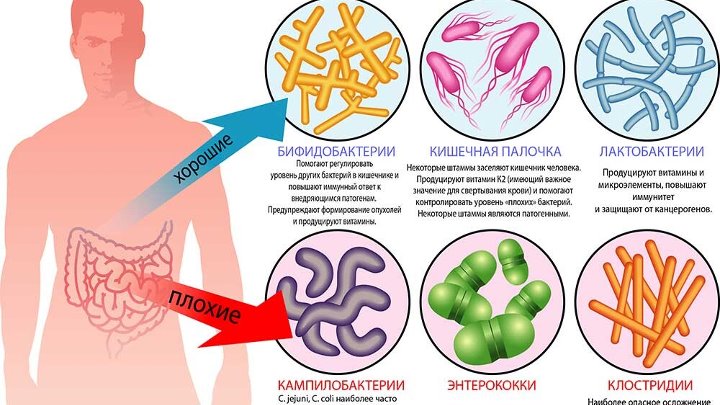
Over-the-Counter Antifungal Treatments
For mild cases, over-the-counter antifungal creams, ointments, or powders can be effective. These typically contain active ingredients such as:
- Clotrimazole
- Miconazole
- Terbinafine
- Ketoconazole
These medications work by killing the Candida fungi or preventing their growth. They are usually applied directly to the affected area for a specified period, often ranging from one to two weeks.
Prescription Treatments for Severe or Persistent Cases
If over-the-counter treatments prove ineffective or the infection is particularly severe, a healthcare provider may prescribe stronger antifungal medications. These might include:
- Oral antifungal drugs like fluconazole
- Stronger topical antifungals
- Medicated powders for areas prone to moisture accumulation
In cases where bacterial infection accompanies the fungal overgrowth, antibiotics may also be prescribed.
Natural and Home Remedies for Candida Skin Infections
While medical treatments are often necessary, some people find relief through natural remedies. Can natural approaches effectively combat Candida overgrowth on the skin?

Dietary Modifications
Some individuals report improvement by modifying their diet to reduce Candida growth. This often involves:
- Limiting sugar and refined carbohydrates
- Increasing probiotic-rich foods like yogurt and kefir
- Consuming foods with natural antifungal properties, such as garlic and coconut oil
Topical Natural Remedies
Several natural substances have shown potential in managing Candida infections:
- Tea tree oil: Known for its antifungal properties, diluted tea tree oil can be applied to affected areas
- Apple cider vinegar: When diluted, it may help restore skin pH and inhibit fungal growth
- Coconut oil: Contains lauric acid, which has antifungal effects
- Aloe vera: May soothe irritated skin and has some antifungal properties
It’s important to note that while these natural remedies may provide relief for some individuals, they are not substitutes for medical treatment in severe or persistent cases. Always consult a healthcare provider before relying solely on natural remedies, especially if the infection is widespread or you have underlying health conditions.

Living with Candidiasis: Managing Recurrent Infections
For some individuals, candidiasis of the skin can be a recurring issue. How can you manage and minimize the impact of frequent Candida infections?
Identifying and Addressing Underlying Factors
Recurrent infections often signal an underlying issue that needs attention. This might include:
- Uncontrolled diabetes
- Chronic use of antibiotics or corticosteroids
- Immunosuppressive conditions
- Hormonal imbalances
Working with a healthcare provider to identify and address these factors can significantly reduce the frequency of infections.
Maintenance Strategies
For those prone to recurrent candidiasis, implementing a proactive maintenance plan can be beneficial:
- Regular use of antifungal powders in susceptible areas
- Adhering to a Candida-conscious diet
- Using probiotics to support a healthy skin microbiome
- Practicing rigorous hygiene, especially in humid conditions or after exercise
By combining medical treatment with lifestyle modifications and preventive measures, many people successfully manage recurrent Candida infections and improve their quality of life.

The Impact of Candidiasis on Special Populations
While candidiasis can affect anyone, certain groups may be more susceptible or experience unique challenges. How does cutaneous candidiasis affect different populations?
Infants and Children
Babies and young children are particularly prone to diaper rash caused by Candida. This is due to the warm, moist environment created by diapers. For this group:
- Frequent diaper changes are crucial
- Using barrier creams can help protect the skin
- Allowing the diaper area to air out regularly can prevent fungal growth
Elderly Individuals
Older adults may be more susceptible to candidiasis due to weakened immune systems, medications, or mobility issues that make thorough hygiene challenging. For this population:
- Regular skin checks, especially in skin folds, are important
- Assistance with hygiene may be necessary
- Managing underlying health conditions is crucial for prevention
Immunocompromised Patients
People with weakened immune systems, such as those with HIV/AIDS or undergoing chemotherapy, are at higher risk for severe or widespread candidiasis. For these individuals:
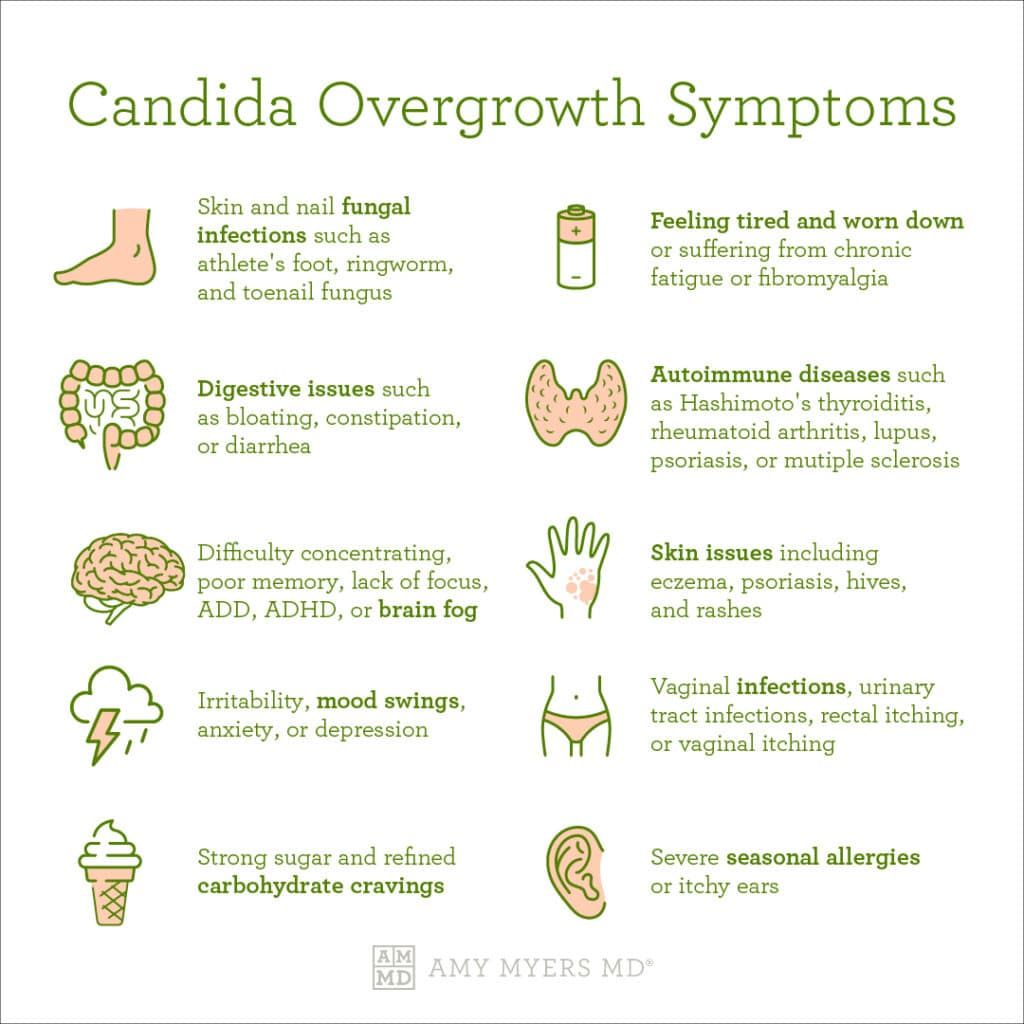
- Vigilant skin care and monitoring are essential
- Prophylactic antifungal treatments may be recommended
- Prompt medical attention for any skin changes is crucial
Understanding the unique needs and risks of different populations can help in tailoring prevention and treatment strategies effectively.
Debunking Myths and Misconceptions About Candidiasis
There are several common misconceptions about candidiasis of the skin that can lead to confusion or inappropriate treatment. What are some of the myths surrounding this condition?
Myth: Candidiasis is Always a Sign of Poor Hygiene
While poor hygiene can contribute to Candida overgrowth, many cases occur in individuals with excellent hygiene practices. Factors like medication use, underlying health conditions, and even genetics can play a role.
Myth: Candidiasis is Highly Contagious
In most cases, candidiasis of the skin isn’t easily transmitted from person to person. However, individuals with weakened immune systems may be more susceptible to developing an infection after contact with affected skin.

Myth: All Skin Rashes Are Candidiasis
Many skin conditions can resemble candidiasis, which is why professional diagnosis is important. Treating all rashes as fungal infections can lead to ineffective management and potentially worsen other skin conditions.
Myth: Natural Remedies Are Always Safer and More Effective
While some natural remedies can be helpful, they are not always safer or more effective than conventional treatments. In some cases, relying solely on natural approaches can allow the infection to worsen.
By dispelling these myths, individuals can make more informed decisions about prevention and treatment, leading to better outcomes in managing candidiasis of the skin.
The Future of Candidiasis Treatment and Research
As our understanding of fungal infections and the human microbiome grows, new approaches to treating and preventing candidiasis are emerging. What developments are on the horizon for managing Candida infections?
Advanced Antifungal Therapies
Researchers are working on developing new antifungal medications that are more effective and have fewer side effects. Some areas of focus include:

- Targeted therapies that specifically disrupt Candida growth mechanisms
- Combination treatments that address both fungal overgrowth and skin barrier dysfunction
- Novel delivery methods for improved penetration of antifungal agents into the skin
Microbiome-Based Approaches
Understanding the role of the skin microbiome in preventing Candida overgrowth is opening new avenues for treatment and prevention:
- Probiotic skin treatments to promote a healthy balance of microorganisms
- Personalized approaches based on individual microbiome profiles
- Development of “smart” moisturizers that support beneficial skin flora
Immunomodulatory Therapies
For individuals with recurrent or treatment-resistant candidiasis, researchers are exploring ways to enhance the immune system’s ability to control Candida growth:
- Topical immunomodulators that boost local immune responses
- Systemic treatments to address underlying immune dysfunction
- Vaccines to prevent Candida overgrowth
As research progresses, individuals affected by candidiasis of the skin can look forward to more effective, personalized treatment options. Staying informed about these developments can help patients and healthcare providers make the best decisions for managing this common but challenging condition.

Candidiasis of the Skin: Causes, Symptoms, and Treatment
We include products we think are useful for our readers. If you buy through links on this page, we may earn a small commission Here’s our process.
Healthline only shows you brands and products that we stand behind.
Our team thoroughly researches and evaluates the recommendations we make on our site. To establish that the product manufacturers addressed safety and efficacy standards, we:
- Evaluate ingredients and composition: Do they have the potential to cause harm?
- Fact-check all health claims: Do they align with the current body of scientific evidence?
- Assess the brand: Does it operate with integrity and adhere to industry best practices?
We do the research so you can find trusted products for your health and wellness.
Read more about our vetting process.
Was this helpful?
Candidiasis is a fungal skin infection. Home remedies and lifestyle changes often help, but antifungal cream or powder may be necessary.
Different types of bacteria and fungi live and grow on your skin. Most of them aren’t dangerous. Your body requires the majority of them to carry out normal functions. However, some can cause infections when they begin to multiply uncontrollably.
The Candida fungus is one of these potentially harmful organisms. When an overgrowth of Candida develops on the skin, an infection can occur. This condition is known as candidiasis of the skin, or cutaneous candidiasis.
Candidiasis of the skin often causes a red, itchy rash to form, most commonly in the folds of the skin. This rash may also spread to other areas of the body. While the symptoms are often bothersome, they can usually be treated with improved hygiene and antifungal creams or powders.
The main symptom of candidiasis of the skin is a rash. The rash often causes redness and intense itching. In some cases, the infection can cause the skin to become cracked and sore. Blisters and pustules may also occur.
The rash can affect various parts the body, but it’s most likely to develop in the folds of the skin. This includes areas in the armpits, in the groin, between the fingers, and under the breasts. Candida can also cause infections in the nails, edges of the nails, and corners of the mouth.
Other conditions that may resemble candidiasis of the skin include:
- ringworm
- hives
- herpes
- diabetes-related skin conditions
- contact dermatitis
- seborrheic dermatitis
- eczema
- psoriasis
Candidiasis of the skin develops when the skin becomes infected with Candida. A small amount of Candida fungi naturally live on the skin. When this type of fungus begins to multiply uncontrollably, however, it can cause an infection. This may occur because of:
- warm weather
- tight clothing
- poor hygiene
- infrequent undergarment changes
- obesity
- the use of antibiotics that kill harmless bacteria that keep Candida under control
- the use of corticosteroids or other medications that affect the immune system
- a weakened immune system as a result of diabetes, pregnancy, or another medical condition
- incomplete drying of damp or wet skin
Candida fungi thrive and grow in warm, moist areas. This is why the condition often affects areas where there are folds of skin.
This is why the condition often affects areas where there are folds of skin.
Babies can also develop candidiasis of the skin, especially on the buttocks. A diaper tends to provide an ideal environment for Candida.
Candidiasis of the skin usually isn’t contagious. However, people with weakened immune systems may develop the condition after touching the skin of an infected person. Those with compromised immune systems are also more likely to develop a severe infection as a result of candidiasis.
Your doctor will likely be able to make a diagnosis simply by performing a physical examination. During the exam, they’ll inspect the location of your rash and the appearance of your skin.
Your doctor may also want to perform a skin culture before making a diagnosis of candidiasis of the skin. During a skin culture, your doctor will rub a cotton swab over the affected area and collect a skin sample. The sample will then be sent to a laboratory to be tested for the presence of Candida.
Candidiasis of the skin can usually be prevented with home remedies, the most important of which is proper hygiene. Washing the skin regularly and drying the skin thoroughly can prevent the skin from becoming too moist. This is vital to keeping Candida infections at bay.
There are many lifestyle changes you can make to both prevent and treat a candidiasis infection.
Helpful tips
- Quickly change out of damp clothing, such as swimsuits or sweaty workout clothes.
- Change your socks and undergarments regularly.
- Wear loose-fitting clothing.
- Use gentle and scent-free soap on affected areas.
- Add probiotics to your diet.
- Reduce the amount of sugar in your diet.
Was this helpful?
Since abnormal blood sugar levels can contribute to the development of Candida infections, keeping your blood sugar under control may also help relieve symptoms. You may be able to lower your blood sugar by reducing the amount of sugar in your diet and by exercising for 30 minutes at least three times per week.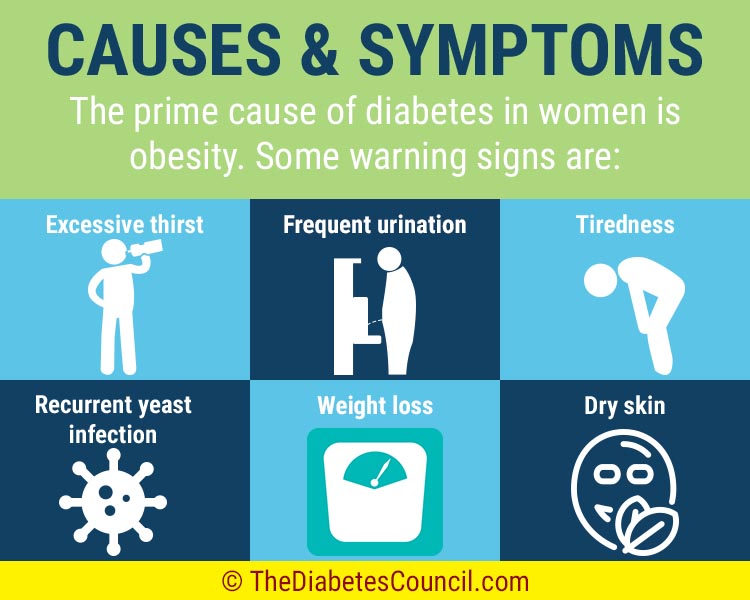 If you have diabetes, it’s important to continue following your doctor’s instructions as you may need to start receiving oral medications or an increased amount of insulin.
If you have diabetes, it’s important to continue following your doctor’s instructions as you may need to start receiving oral medications or an increased amount of insulin.
In severe or persistent cases of candidiasis, your doctor may recommend using an antifungal cream or powder that can be applied to your skin. Over-the-counter antifungal creams that are often recommended include clotrimazole (Mycelex), miconazole (Monistat), and tioconazole (Vagistat). This type of treatment can kill Candida and reduce the spread of the infection.
Your doctor may prescribe an antifungal cream such as nystatin or ketoconazole if the over-the-counter treatments aren’t effective. If the infection has already spread to areas inside your body, such as your throat or mouth, you may need to take an oral antifungal to get rid of it.
Cutaneous candidiasis (or candidiasis present on skin, nails, or hair) is a common occurrence in infants and babies.
Candidiasis-related diaper rash is one of the most frequently occurring candidiasis infections in babies. This rash is typically red with a well-defined border, and normally lasts more than three days. Treatment includes changing the infant’s diaper frequently and allowing them to wear loose-fitting clothes on top of the diaper. The antifungal nystatin may be prescribed.
This rash is typically red with a well-defined border, and normally lasts more than three days. Treatment includes changing the infant’s diaper frequently and allowing them to wear loose-fitting clothes on top of the diaper. The antifungal nystatin may be prescribed.
Oral thrush is another common occurrence in newborns and infants under 6 months old. Symptoms can include cracked skin in the corners of the mouth and whitish patches on the lips, tongue, or inside of the cheeks. Your doctor can prescribe an antifungal medication that’s applied to the infant’s mouth several times a day.
If candidiasis infection is left untreated, it can enter the bloodstream and spread. See your doctor if you believe your baby has candidiasis.
Learn more: Oral thrush »
Although healthy children have strong immune systems, a 2010 study found that the rate of topical fungal infections among children is increasing rapidly. Children sometimes develop candidiasis infections after receiving antibiotics that treat another condition. Children who suck their thumbs may be prone to developing candidiasis infections in or around their nail beds.
Children who suck their thumbs may be prone to developing candidiasis infections in or around their nail beds.
If your child is 9 months or older and has reoccurring thrush or skin infections, this could point to an underlying health concern, such as HIV or another problem with the immune system. Older children with frequent or severe skin infections should also be tested for diabetes.
Candidiasis of the skin usually goes away with treatment, and most people fully recover without complications. If treated, the candidiasis typically resolves within one to two weeks. Without prescription treatment, recovery can take anywhere from a few days to a few weeks, depending on the severity of the infection.
Even with treatment, it is possible for the infection to return in the future. People with compromised immune systems, especially those undergoing chemotherapy and those with HIV or AIDS, are at a much higher risk of severe or life threatening Candida infections. If you’re undergoing chemotherapy or you have HIV or AIDs and you develop severe throat pain, headache, or high fevers, you should see your doctor immediately.
If you’re undergoing chemotherapy or you have HIV or AIDs and you develop severe throat pain, headache, or high fevers, you should see your doctor immediately.
A:
Answers represent the opinions of our medical experts. All content is strictly informational and should not be considered medical advice.
Was this helpful?
Emerging Fungal Pathogen Causing a Persistent Rash
AFFILIATIONS:
1Medical Student, University of Florida College of Medicine, Gainesville, FL
2Department of Pediatrics, University of Florida College of Medicine, Gainesville, FL
CITATION:
von Zabern LB, Carter CG. Emerging fungal pathogen causing a persistent rash. Consultant. 2022;62(11):e9. doi:10.25270/con.2022.04.00005
Received December 29, 2021. Accepted January 11, 2022. Published online July 14, 2022.
DISCLOSURES:
The authors report no relevant financial relationships.
CORRESPONDENCE:
Carolyn G.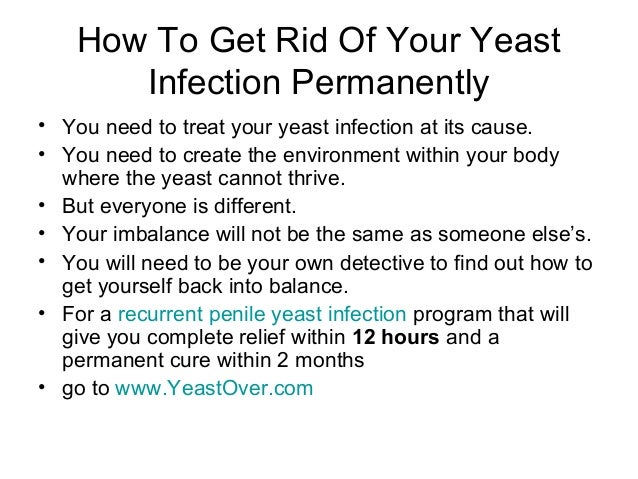 Carter, Department of Pediatrics, University of Florida, PO Box 100296, Gainesville, FL 32610 ([email protected])
Carter, Department of Pediatrics, University of Florida, PO Box 100296, Gainesville, FL 32610 ([email protected])
ABSTRACT: Candida haemulonii is a rare, fungal organism. This emerging, multidrug resistant pathogen can cause many different types of infections. We present a case of a previously healthy, 16-year-old girl with a lower extremity rash. The rash persisted despite treatment with a variety of oral and topical antifungal medications. It eventually resolved after treatment with intravenous echinocandins, a class of antifungal drugs that target the fungal cell wall. This case emphasizes the importance of forming a broad differential diagnosis. When a skin lesion does not respond to empiric treatment based on the presumptive diagnosis, one must consider atypical presentations and rare causes. Candida haemulonii, in particular, can be easily misidentified as other fungal pathogens. Therefore, genetic identification and antimicrobial susceptibility tests may be crucial in guiding diagnosis and treatment.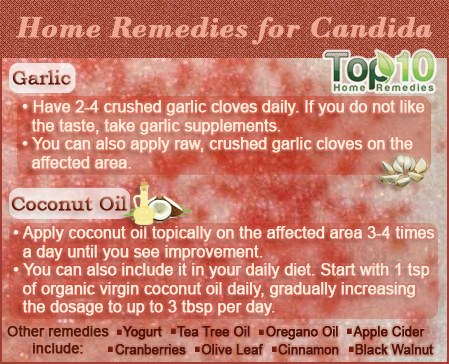
Keywords: Candida haemulonii, multidrug resistant pathogens, antifungal
A 16-year-old girl with no significant medical history presented to her pediatrician’s office with a 3-week history of an enlarging, pruritic patch on her left thigh that had not responded to topical lotion. The family history was noncontributory. The family owned a hamster, a cat, and dogs as pets.
Physical examination revealed a 1.2-cm slightly scaly, round, red lesion with central clearing (Figure 1). The clinical appearance suggested a partial diagnosis of tinea corporis. The patient was advised to treat the rash with over-the counter clotrimazole or another topical antifungal cream three times per day for 2 weeks or until the skin was clear for 2 to 3 days.
Figure 1. Photograph depicting the initial presentation of the patient’s lesion, a round patch with central clearing.
Two and a half months later, the patient returned to her pediatrician’s office with no improvement of the lesion after treating with either topical clotrimazole or butenafine 1%./what-are-the-symptoms-of-a-yeast-diaper-rash-284384_hl1-c1437d0be6194ce692af523feaf7fb2f.png) Examination of the patient’s left inner thigh showed a 3.5-cm circular area of red pinpoint papules with scaly skin and no central clearing (Figure 2). The pediatrician referred the patient to a dermatologist. The patient was seen by the specialist one month later during which time the rash had continued to spread. Physical examination showed an 8-10-cm annular, scaly, thin, pink plaque on the patient’s left inner thigh (Figure 3) and a 2-cm annular patch on her right inner thigh. A potassium hydroxide (KOH) preparation test and fungal culture were taken. Although the KOH prep test was negative, empiric treatment with daily oral terbinafine 250 mg for 30 days and twice-daily application of over-the-counter terbinafine cream until the rash resolved was advised. The rash continued to worsen, becoming increasingly pruritic and beginning to weep.
Examination of the patient’s left inner thigh showed a 3.5-cm circular area of red pinpoint papules with scaly skin and no central clearing (Figure 2). The pediatrician referred the patient to a dermatologist. The patient was seen by the specialist one month later during which time the rash had continued to spread. Physical examination showed an 8-10-cm annular, scaly, thin, pink plaque on the patient’s left inner thigh (Figure 3) and a 2-cm annular patch on her right inner thigh. A potassium hydroxide (KOH) preparation test and fungal culture were taken. Although the KOH prep test was negative, empiric treatment with daily oral terbinafine 250 mg for 30 days and twice-daily application of over-the-counter terbinafine cream until the rash resolved was advised. The rash continued to worsen, becoming increasingly pruritic and beginning to weep.
Figure 2. Enlarged area of red pinpoint papules with scaling on the patient’s left inner thigh.
Figure 3.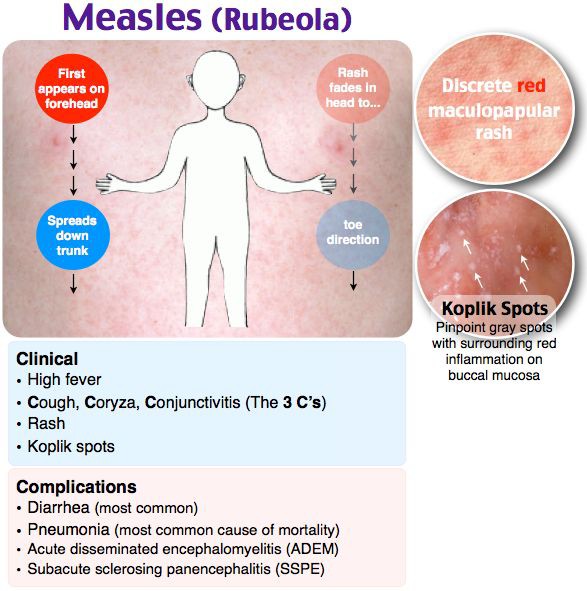 Pink, annular plaque with scale on the patient’s left inner thigh.
Pink, annular plaque with scale on the patient’s left inner thigh.
Preliminary culture results showed Candida haemulonii, for which the dermatologist prescribed a 14-day course of once-daily oral fluconazole 100 mg and twice-daily topical ketoconazole; the previous terbinafine regimens were stopped. At a follow-up visit 2 weeks later, the patient’s rash was less pruritic, but overall, the area was tender and unchanged in size. At this visit, an additional fungal culture was taken with orders for antifungal susceptibility testing, and the patient was switched to a 6-week course of daily oral itraconazole 200 mg. The patient was urgently referred to an infectious disease specialist.
At the specialist appointment 5 days later, the patient reported she was unable to obtain itraconazole due to insurance issues. The thigh lesions had continued to increase in size, and she had developed itching on the right-upper side of her abdomen. Examination showed a 4 × 3 cm lesion on her right thigh and a 9. 5 × 3 cm lesion on her left thigh. Both were elevated, erythematous, and scaly with well-demarcated, irregular borders and no central clearing. There was an additional satellite lesion on her distal right, anterior leg, and excoriations on her right-upper abdomen overlying a few small pink papules.
5 × 3 cm lesion on her left thigh. Both were elevated, erythematous, and scaly with well-demarcated, irregular borders and no central clearing. There was an additional satellite lesion on her distal right, anterior leg, and excoriations on her right-upper abdomen overlying a few small pink papules.
Based on the appearance of new lesions, the patient was admitted to the hospital the following day for treatment with intravenous (IV) micafungin, an echinocandin. On the morning of her admission, the patient woke up with a new rash, consisting of scattered, pruritic, pink papules that began on her legs and ascended to her trunk. The lesions on her thighs were weeping brown exudate.
The following day, after receiving her first dose of micafungin, the weeping erythematous rashes (Figure 4) with satellite lesions on both of her legs had not increased in size. A maculopapular rash (Figure 5) that developed the day of her admission continued to spread. Biopsies of the left thigh lesion and the papular rash on her back showed spongiosis and lymphohistiocytic infiltrate with eosinophils, indicating a possible id reaction, or autoeczematization, overlying the initial fungal rash. Repeat fungal cultures were negative, so antifungal susceptibility testing was not completed. Immunodeficiency workup, including T- and B-cell subsets, immunoglobulin levels, and HIV serology, was negative.
Repeat fungal cultures were negative, so antifungal susceptibility testing was not completed. Immunodeficiency workup, including T- and B-cell subsets, immunoglobulin levels, and HIV serology, was negative.
The patient was discharged with a peripherally inserted central catheter and completed a 4-week course of IV micafungin, after which her thigh lesions resolved. The papular rash, which biopsy showed was likely an id reaction associated with Candida fungal infection, resolved with as-needed topical steroids.
Figure 4. Erythematous lesion weeping brown exudate.
Figure 5. Scattered pink papules on thigh.
Discussion. The C haemulonii complex is an emerging species of opportunistic yeast pathogens.1 It includes C haemulonii sensu stricto, C haemulonii var. vulnera, and C duobushaemulonii.1 It is considered closely related to other non-albicans Candida species, such as C auris. 1 Given the rarity of this organism, detailed data of worldwide infection rates are not currently available. One study found that organisms from the C haemulonii comprised 1.7% of yeasts isolated from 2014 to 2019.1 Available data show this species typically causes sporadic infections.2 However, the prevalence may be underestimated since classical phenotypic identification methods cannot accurately ascertain these species.1 Additionally, these species may be misidentified as C auris in laboratories that do not have access to DNA sequencing or other advanced mass spectrometry.3 Therefore, in cases where a fungal infection is not responding to typical treatments, it is important to collect samples for specific genetic testing, as was done with our patient, to allow for pathogen identification and analysis.
1 Given the rarity of this organism, detailed data of worldwide infection rates are not currently available. One study found that organisms from the C haemulonii comprised 1.7% of yeasts isolated from 2014 to 2019.1 Available data show this species typically causes sporadic infections.2 However, the prevalence may be underestimated since classical phenotypic identification methods cannot accurately ascertain these species.1 Additionally, these species may be misidentified as C auris in laboratories that do not have access to DNA sequencing or other advanced mass spectrometry.3 Therefore, in cases where a fungal infection is not responding to typical treatments, it is important to collect samples for specific genetic testing, as was done with our patient, to allow for pathogen identification and analysis.
C haemulonii can cause wound and other superficial infections, such as onychomycosis, vaginal candidiasis, and chronic otitis media.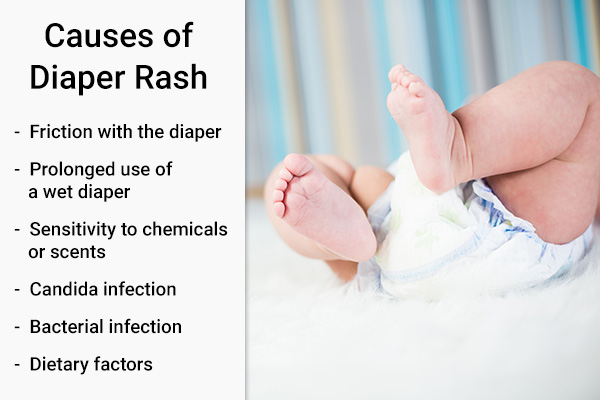 2,3 More invasive infections associated with candidemia have also been reported, although these are typically seen in neonates, critically ill patients, and patients with comorbidities, such as cancer or diabetes mellitus.1
2,3 More invasive infections associated with candidemia have also been reported, although these are typically seen in neonates, critically ill patients, and patients with comorbidities, such as cancer or diabetes mellitus.1
C haemulonii has a wide but variable resistance pattern, making it difficult to treat.4 Many studies report high minimum inhibitory concentrations (MIC) for amphotericin B,1-3 which may indicate intrinsic resistance to this drug.2 However, one case report describes a deep cutaneous infection successfully treated with a combination of amphotericin B, fluconazole, and surgical debridement,5 showing this pattern is not universal. High MICs for fluconazole are also common, but this trait is not extremely widespread.3 In one study, most azole-resistant isolates were from Latin America, with this trait being associated with an ERG11 mutation.3
It is suggested that C haemulonii infections be treated with echinocandins. 1 This is a class of drugs that inhibit b-(1,3)-D-glucan synthase, limiting fungal cell wall synthesis.6 However, isolated cases of echinocandin-resistant organisms have been reported.7 The C haemulonii complex has wide genetic diversity, which is consistent with recent population expansion.3 The emergence of this organism in different parts of the world, where certain antifungals may be used with different frequencies, could explain the varying resistance patterns as well as their association with certain geographical areas. Therefore, when treating unusual fungal infections, such as C haemulonii, detailed susceptibility testing of an isolate from the infection in question should be done to determine which treatment will be most effective. However, before these results are available, echinocandins can be used for empiric treatment.
1 This is a class of drugs that inhibit b-(1,3)-D-glucan synthase, limiting fungal cell wall synthesis.6 However, isolated cases of echinocandin-resistant organisms have been reported.7 The C haemulonii complex has wide genetic diversity, which is consistent with recent population expansion.3 The emergence of this organism in different parts of the world, where certain antifungals may be used with different frequencies, could explain the varying resistance patterns as well as their association with certain geographical areas. Therefore, when treating unusual fungal infections, such as C haemulonii, detailed susceptibility testing of an isolate from the infection in question should be done to determine which treatment will be most effective. However, before these results are available, echinocandins can be used for empiric treatment.
Conclusion
The Candida haemulonii complex is an emerging, multidrug resistant fungal pathogen capable of causing a variety of superficial and invasive infections. Candida haemulonii can be misidentified as other fungal infections, so specific genetic testing is useful when an infection does not respond to typical treatment regimens. Candida haemulonii has a highly variable resistance pattern. Thus, detailed susceptibility should be performed to allow for focused and effective treatment. Until results are available, echinocandins can be used for empiric treatment.
Candida haemulonii can be misidentified as other fungal infections, so specific genetic testing is useful when an infection does not respond to typical treatment regimens. Candida haemulonii has a highly variable resistance pattern. Thus, detailed susceptibility should be performed to allow for focused and effective treatment. Until results are available, echinocandins can be used for empiric treatment.
fungi, parasitic diseases, viruses, allergies
Published: 07/12/2018 Reading time: 14 min. 160512
Share:
The group of skin diseases in dogs is quite wide, so the symptoms can be very different. Owners usually pay attention to bald spots, blisters, inflamed areas, intense hair loss, itching, smell, etc. Bald areas of the skin are most frightening, which immediately raise suspicions that the disease is contagious to humans. But it is not always the case.
When is the disease most likely to be contagious?
- Areas of baldness (alopecia) are clearly defined in shape.

- Itching is present.
- Bald spots appeared suddenly, their area and number are increasing.
- Paws, muzzle, ear area are affected.
- The dog walks and communicates with other animals.
First steps:
- keep children away from sick dogs;
- Do not comb or pet your pet;
- isolate the dog, allocate a separate space for it;
- Be sure to contact your veterinarian for diagnosis and treatment.
But not all “contagious” diseases are dangerous to humans. Among the microorganisms that parasitize on the skin, there are:
- bacteria . They are part of the normal flora. There are pathogenic strains, such as Staphylococcus aureus, but it does not always cause disease;
- fungi . Some, such as candida, are part of the normal flora. Pathogenic fungi include spore-forming fungi such as microsporum and trichophyton. Can cause disease in both animals and humans;
- viruses, rickettsia .
 As a rule, pathogens are species-specific;
As a rule, pathogens are species-specific; - parasites . Microscopic mites parasitize on the skin, dirofilaria under the skin. Leishmania and other exotic parasites are common in the subtropics. Some can be transmitted to humans, but dirofilaria and leishmania, for example, only through an insect bite.
It should be understood that conditionally pathogenic microorganisms that are always present on the skin can also cause the disease. But, as a rule, for enhanced reproduction, they need a push – a decrease in immunity, a change in the acidity of the skin, a violation of the integrity of the skin, or other negative changes.
Non-contagious skin diseases include:
- diseases resulting from injuries;
- allergic;
- autoimmune;
- oncological;
- psychogenic;
- endocrine;
- alimentary;
- system;
- hereditary diseases.
This division is very conditional, since infections often join the primary disease. Moreover, skin problems may be just one of the symptoms of the underlying disease.
Moreover, skin problems may be just one of the symptoms of the underlying disease.
What can the owner do?
- Adjust the dog’s diet . The development of dermatitis is promoted by deficiencies of vitamins of group A, group B and unsaturated fatty acids. To compensate for their lack of feed, the veterinarian may prescribe the intake of vitamin-mineral complexes and other feed additives. For dogs suffering from skin diseases, AVZ offers a mineral-vitamin feed supplement “Bone with brewer’s yeast”.
- Adhere to proper pet care. First you need to avoid rubbing the skin with a collar and muzzle, if any. In addition, skin dermatitis tends to be complicated by a bacterial infection, so the affected areas can be treated with antiseptics, but only as prescribed by a doctor. The AVZ company offers for this purpose the Migstim solution based on the antimicrobial drug miramistin, supplemented with an anti-inflammatory chamomile extract, chitosan succinate and ethyl alcohol.

- Follow treatment. Topical ointments, gels and sprays should be applied as directed by a physician, without interruption or omission of treatments. In case of complications of dermatitis with a microbial infection, the veterinarian may prescribe oral antibiotics, and in case of a fungal infection, antimycotic drugs. These drugs may have side effects such as nausea and loss of appetite. But the treatment must be continued, only consult a doctor for correction of appointments. As a rule, the inclusion of antioxidants and hepatoprotectors in the course can reduce unpleasant manifestations.
For the prevention of skin diseases of bacterial etiology, Okvet therapeutic shampoo with chlorhexide can be prescribed.
Microsporia and trichophytosis
Skin diseases of dogs caused by pathogenic fungi are sometimes called lichen, although the term “dermatomycosis” is more correct. These are several diseases with similar symptoms caused by spore-forming fungi.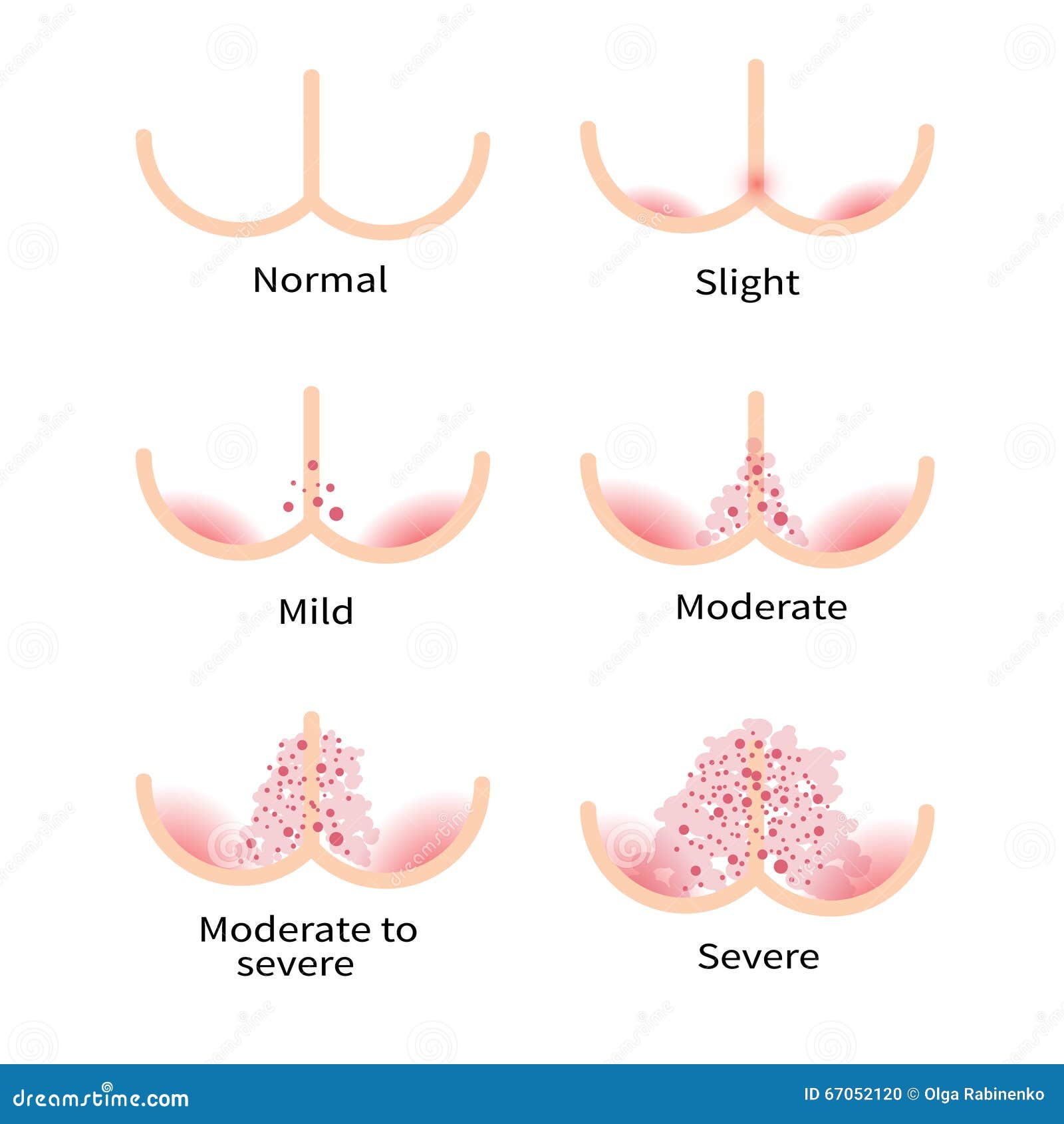 Most often, dogs suffer from microsporia, in common parlance – ringworm. Lichen in dogs manifests itself very characteristically – in the form of regular-shaped spots with a bright pink rim and “shorn” hair. Trichophytosis is also dangerous, which manifests itself in almost the same way as microsporia, but the causative agent of this disease is different. Favus (scab) is practically not found – a skin disease that manifests itself in the formation of thick grayish-yellow crusts on the skin. Dog owners can easily contract fungal diseases from their pet. Be sure to contact your veterinarian for diagnosis and treatment. As a therapy, both local antifungal ointments and tablets are used, sometimes injections. When treating fungal dermatitis in a pet, it is imperative to observe personal hygiene! As a rule, dermatomycosis is successfully treated.
Most often, dogs suffer from microsporia, in common parlance – ringworm. Lichen in dogs manifests itself very characteristically – in the form of regular-shaped spots with a bright pink rim and “shorn” hair. Trichophytosis is also dangerous, which manifests itself in almost the same way as microsporia, but the causative agent of this disease is different. Favus (scab) is practically not found – a skin disease that manifests itself in the formation of thick grayish-yellow crusts on the skin. Dog owners can easily contract fungal diseases from their pet. Be sure to contact your veterinarian for diagnosis and treatment. As a therapy, both local antifungal ointments and tablets are used, sometimes injections. When treating fungal dermatitis in a pet, it is imperative to observe personal hygiene! As a rule, dermatomycosis is successfully treated.
Conditionally pathogenic fungi, such as candida, malassezia, etc., begin to multiply intensively and bring inconvenience only if conditions are favorable. They often cause inflammation in the folds of the skin in breeds such as Shar Pei, Bulldog and Basset. These fungi can be quite dangerous if they get inside the body against the background of a decrease in immunity.
They often cause inflammation in the folds of the skin in breeds such as Shar Pei, Bulldog and Basset. These fungi can be quite dangerous if they get inside the body against the background of a decrease in immunity.
Parasitic diseases
Parasites are the unchanging leaders among the causative agents of canine diseases, and the most common of them are fleas and withers. Hiding in the coat of dogs, they feed on blood or scales of the epidermis. Combing the bites, the pet injures the skin and can cause an infection, which creates prerequisites for the development of infectious dermatitis. Therefore, if you walk your pet on the street, take it to events and outdoors, it is important to take care of protection – timely treatment with drops (“Bars forte”) or wearing an antiparasitic collar (“Bars”).
But fleas and lice are not the only parasites. The cause of itching, inflammation and anxiety of the animal can be microscopic mites, causing:
- demodicosis is a disease caused by a mite that lives inside the sebaceous glands and hair follicles.
 The main symptoms of the disease are hair loss on the face and neck, the formation of dense convex nodules on the skin. There is almost no itching with demodicosis. Demodicosis is difficult to treat – powerful antiparasitic drugs of general action and careful care for damaged skin areas are required;
The main symptoms of the disease are hair loss on the face and neck, the formation of dense convex nodules on the skin. There is almost no itching with demodicosis. Demodicosis is difficult to treat – powerful antiparasitic drugs of general action and careful care for damaged skin areas are required; - Sarcoptic mange is a dangerous disease caused by microscopic mites that live in the thickness of the skin. They can damage nerve endings and cause unbearable itching. The coat quickly falls out, the skin is covered with abrasions and pustules, sometimes the dog combs to the point of blood. If you do not consult a doctor, then the pet may die from anemia and exhaustion;
- otodectosis is a disease caused by ear mites. Typical manifestations are itching and scratching in the ear area, the presence of dense brown crusts inside the auricle. Treatment is with antiparasitic ear drops.
There are many more scabies mites. Some of them can cause disease in humans. Fortunately, they are incapable of reproducing in human skin. But it is necessary to take precautions when treating a scabious dog, otherwise the owner can provide himself with a month of extremely unpleasant sensations. We also remind you that canine scabies products should not be used on humans.
Fortunately, they are incapable of reproducing in human skin. But it is necessary to take precautions when treating a scabious dog, otherwise the owner can provide himself with a month of extremely unpleasant sensations. We also remind you that canine scabies products should not be used on humans.
In relation to various stages of development of sarcoptoid and demodectic mites (larval and mature), the acaricidal solution “Amit forte”, drops on the withers “Dironet spot-on”, spray “Bars forte” have pronounced properties. The use of drugs is carried out under the supervision of a veterinarian.
Allergy
The causes of allergic dermatitis and eczema in dogs are cosmetic or medicinal products, flea bites and other ectoparasites, plant pollen, household chemicals, and most often the cause can be found in the diet. Some dogs are prone to reactions to meaty foods, high levels of certain grains in foods, and egg whites. German and Central Asian Shepherds, Bulldogs, Shar-Peis, as well as dwarf decorative breeds have the highest sensitivity. There is an increased risk of developing allergies in white and chocolate colored dogs.
There is an increased risk of developing allergies in white and chocolate colored dogs.
The symptoms of an allergy depend on its source. So, with intolerance to feed components, not only itching, rashes and redness on the skin, but also tearing, vomiting, and instability of the stool can be observed. Ears often become inflamed, peculiar “effusions” may appear in the armpits, on the chest and inguinal region. With contact allergies, the most severe manifestations are observed at the site of application of a cosmetic or other product. When allergic to flea bites, the dog experiences severe itching in the sacrum, and the parasites themselves can be found in the coat.
Identifying the cause of an allergy is often a long and costly process. Be sure to take tests, their results are very important for the diagnosis. Treatment may also not be effective the first time, as the doctor has to rule out many possible causes. With food allergies, various mono-diets are prescribed in order to identify and eliminate the negative component of the feed. Be patient – even the most correct diet will not free your pet’s body from the allergen in a day or two. Sometimes you have to wait weeks for a positive result. The reaction to flea bites also does not go away immediately after their destruction. It may take several days. A sign of recovery will be a gradual decrease in itching, a decrease in foci of inflammation and an improvement in the general condition of the dog.
Be patient – even the most correct diet will not free your pet’s body from the allergen in a day or two. Sometimes you have to wait weeks for a positive result. The reaction to flea bites also does not go away immediately after their destruction. It may take several days. A sign of recovery will be a gradual decrease in itching, a decrease in foci of inflammation and an improvement in the general condition of the dog.
As a quick fix, the veterinarian will usually prescribe antihistamines and, in severe cases, corticosteroids. But in this way you can only extinguish the symptoms. If the cause is not removed, the allergy will return.
Other diseases
Itching, inflammation and hair loss may be just some of the symptoms of the underlying disease, and “treating the skin” in these cases is useless. Autoimmune, endocrine, psychogenic diseases caused by malnutrition are treated in a complex way. Therefore, do not be surprised if, in addition to examining the skin, the doctor will prescribe other tests for your pet.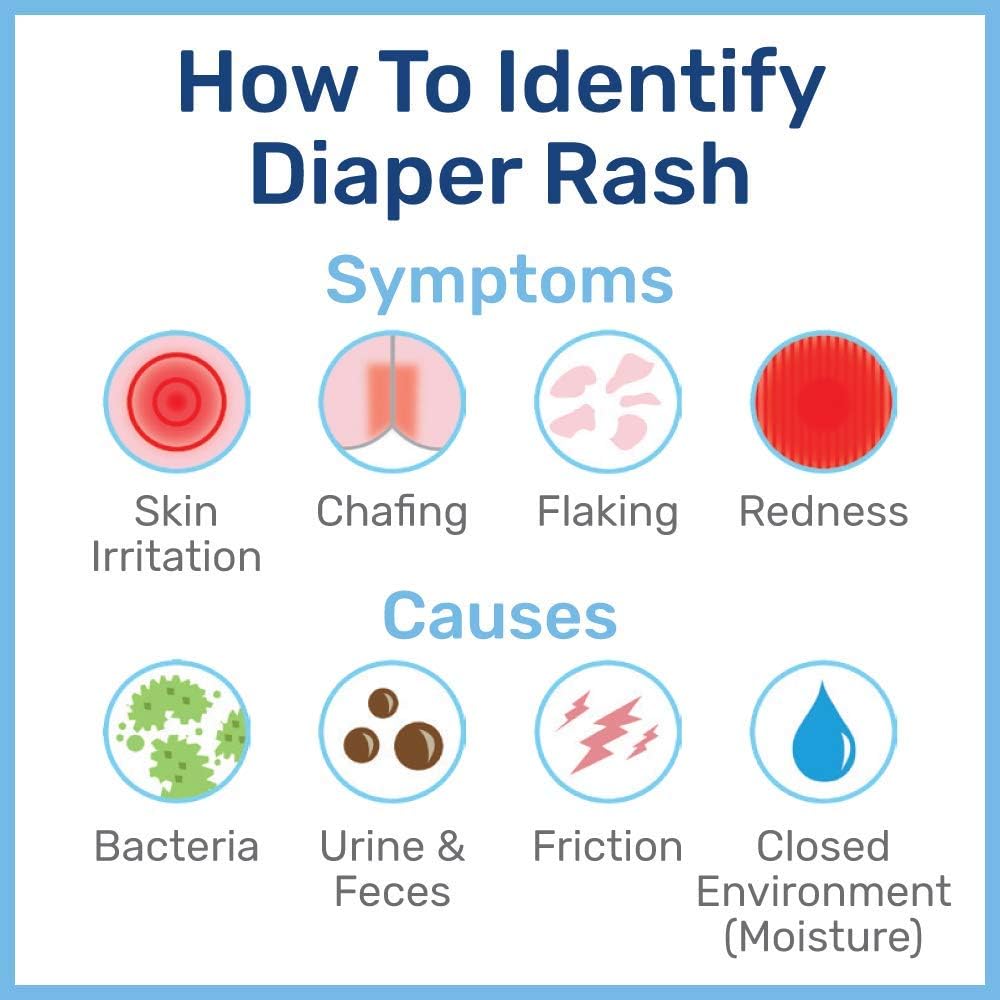 Be prepared to answer questions about feeding and keeping the dog, about medications and behavioral patterns, about the health of her parents and littermates. The more questions a doctor has, the more carefully he approaches his professional duties. Perhaps as a result, your animal will be prescribed a treatment that is completely unrelated to the treatment of the skin. And do not try to engage in the selection of medicines on the Internet or consulting with familiar dog owners. Remedies for lichen will not help with skin itching of psychogenic origin, and anti-scabies ointment – with endocrine pathology. Entrust the diagnosis and treatment to a professional so as not to complicate your dog’s illness with the negative consequences of the ill-considered use of drugs.
Be prepared to answer questions about feeding and keeping the dog, about medications and behavioral patterns, about the health of her parents and littermates. The more questions a doctor has, the more carefully he approaches his professional duties. Perhaps as a result, your animal will be prescribed a treatment that is completely unrelated to the treatment of the skin. And do not try to engage in the selection of medicines on the Internet or consulting with familiar dog owners. Remedies for lichen will not help with skin itching of psychogenic origin, and anti-scabies ointment – with endocrine pathology. Entrust the diagnosis and treatment to a professional so as not to complicate your dog’s illness with the negative consequences of the ill-considered use of drugs.
Simple ways to prevent skin diseases
- Keep parasites away. Treat your dog regularly for fleas and ticks.
- Avoid contact with stray animals. Ringworm is far from the worst thing that your dog can get from an unknown dog or cat.

- Be hygienic, but don’t wash your dog too often. The exception is the paws after a walk, and for wire-haired ones, a mustache and beard after eating.
- Brush your dog regularly.
- The animal’s diet must be complete and contain all the necessary substances. If your dog is allergic to certain foods, avoid accidentally feeding or eating them.
- Do not give your dog human treats and delicacies.
- Take your dog regularly to the veterinarian for preventive check-ups.
Medicines to have in your veterinary first aid kit
- Migstim is a solution with antiseptic and anti-inflammatory properties. Indispensable for the treatment of wounds and abrasions.
- Okvet therapeutic shampoo with chlorhexidine – reduces the duration of treatment of skin diseases, helps to remove inflammation products, microorganisms and allergens from the skin and coat of the animal, and also eliminates the cause of unpleasant odor.
 .
. - Elite Professional Spray Shampoo will help to avoid fungal infection of the beard of rough-haired dogs.
Read the instructions before using the drugs.
Author: AVZ
Add comment
Rate article
Share:
Back to tips list
More tips related to
Major skin diseases in dogs
Read more
Cystitis in dogs
Read more
Comments
Viola |
Our Labrador developed severe bald patches and hard blisters on his elbows. .We think that because he constantly sleeps on the bare floor. But the doctor, anyway, ordered us an examination. |
Veterinary Specialist AVZ |
Viola, your doctor is absolutely right. |
Galina |
Alobai has a swollen egg. We give injections. Ceftrioxone but does not go away. The veterinarian says to give injections. What to do. Maybe something else can be treated. |
Veterinarian |
Hello, Galina! |
Dermatitis in cats and dogs
Dermatitis is the general name for an inflammatory skin reaction. Most often, dermatitis in cats and dogs develops due to the colonization of microbes (fungi of the genus Malassezia and bacteria, i.e. cocci).
The skin under normal conditions in the body has a protective (barrier) function and is covered with malassesia and bacteria, which are normal constituents of the skin. Normally, they are present in small quantities. If the microclimate or the integrity of the skin changes, microbes begin to multiply actively, which leads to microbial dermatitis.
If your pet’s skin is covered with scratches, scratches, bald areas (alopecia), it is possible that it is affected by bacteria or yeast. The microbial form of the inflammatory process is always secondary to any primary disease.:max_bytes(150000):strip_icc()/recognizing-and-treating-a-yeast-diaper-rash-284385_V22-b70e081800c743f0bef2a2bac5d11112.jpg) It is not transmitted to other animal species and humans.
It is not transmitted to other animal species and humans.
Various causes can cause changes in the skin and allow germs to multiply excessively and lead to dermatitis. These include:
– allergic reactions. In this case, we are talking about allergic dermatitis in cats and dogs, when the reaction occurs to flea saliva, food protein or carbohydrate; when there is atopy, i.e. a hypersensitivity reaction to any component of the environment. These components include: plant pollen, house dust mites, human epithelium, causing atopic dermatitis in cats and dogs;
– demodicosis and other parasitic diseases;
– endocrine diseases.
Any pathological process that interferes with the natural protective function of the skin may be a predisposing factor for a yeast and/or bacterial infection of the skin.
Clinical signs
The clinical signs (symptoms) of dermatitis in dogs and cats are very variable and will depend on the primary cause of the disease. Most often on the skin you can see erythema (redness), alopecia (bald areas of the skin), scabs, crusts, rashes, lichenification (thickening of the skin), hyperpigmentation. As a rule, the affected areas have an unpleasant odor, sometimes exudation occurs.
Most often on the skin you can see erythema (redness), alopecia (bald areas of the skin), scabs, crusts, rashes, lichenification (thickening of the skin), hyperpigmentation. As a rule, the affected areas have an unpleasant odor, sometimes exudation occurs.
Some rashes are caused by the accumulation of moisture, such as in the folds of the skin and in the spaces between the fingers where the skin is poorly ventilated.
Diagnosis
Diagnosis requires cytology, swabs taken from affected areas and their examination with staining under a microscope. Culture does not always have diagnostic value, since microbes should normally be present on the skin.
Treatment
Treatment of dermatitis in dogs and cats consists of local treatment of the affected areas with antiseptic solutions containing 2-4% chlorhexidine in its composition, and the implementation of systemic drug treatment (antifungal and / or antibacterial drugs).
When only local (local) treatments are needed, and when to choose systemic treatment, the doctor, not the owner of the animal, should decide.


 As a rule, pathogens are species-specific;
As a rule, pathogens are species-specific;
 The main symptoms of the disease are hair loss on the face and neck, the formation of dense convex nodules on the skin. There is almost no itching with demodicosis. Demodicosis is difficult to treat – powerful antiparasitic drugs of general action and careful care for damaged skin areas are required;
The main symptoms of the disease are hair loss on the face and neck, the formation of dense convex nodules on the skin. There is almost no itching with demodicosis. Demodicosis is difficult to treat – powerful antiparasitic drugs of general action and careful care for damaged skin areas are required;
 .
. With elbow calluses, it is desirable to exclude some diseases that occur with similar symptoms. But, nevertheless, soft bedding, if not solve the problem, then at least smooth it out. And it is desirable to treat corns with special means, for example FITODOC dermatological drops.
With elbow calluses, it is desirable to exclude some diseases that occur with similar symptoms. But, nevertheless, soft bedding, if not solve the problem, then at least smooth it out. And it is desirable to treat corns with special means, for example FITODOC dermatological drops. For non-breeding animals, bilateral castration can also be considered. It is difficult to give advice without seeing the patient.
For non-breeding animals, bilateral castration can also be considered. It is difficult to give advice without seeing the patient.